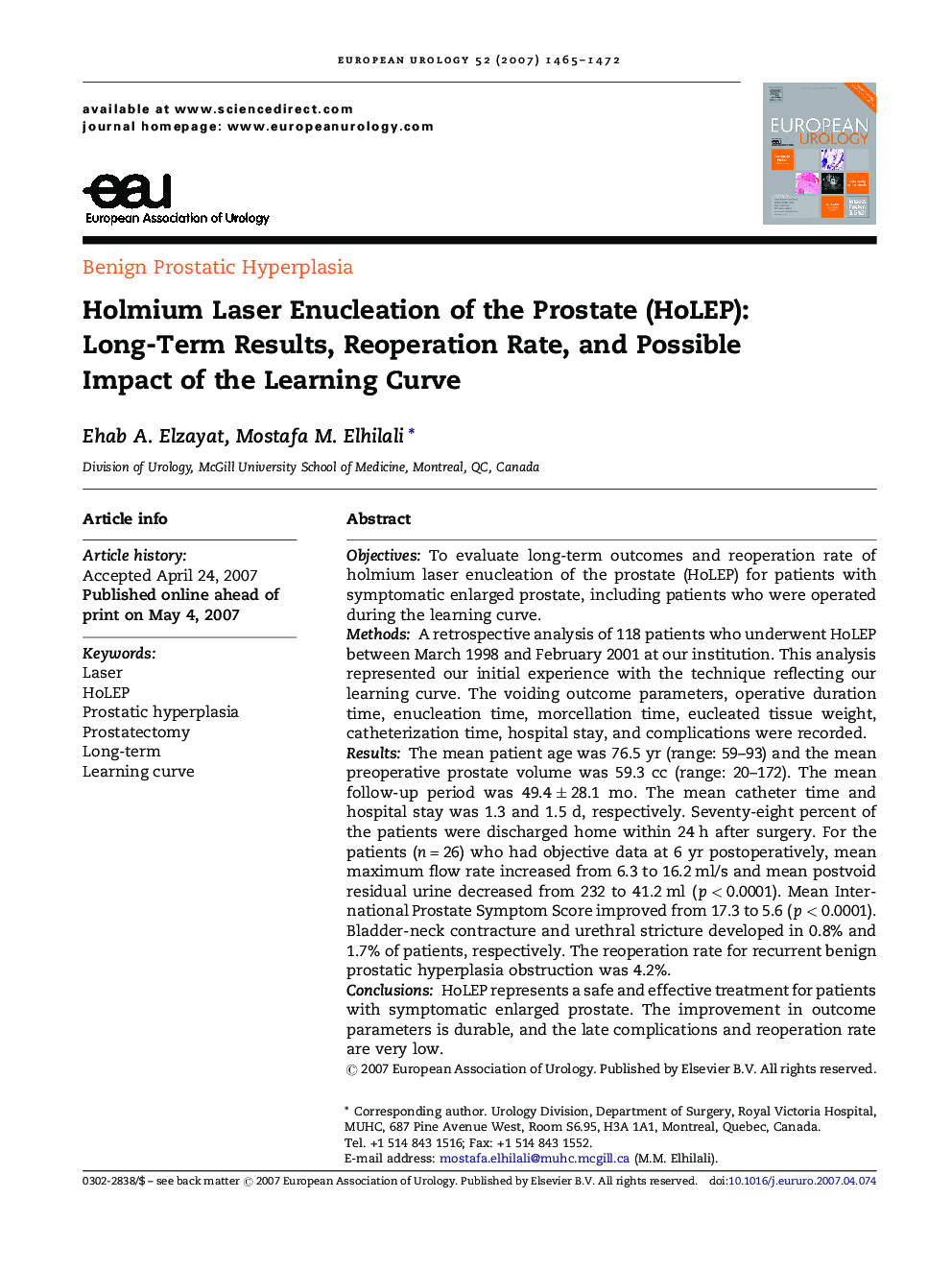| Article ID | Journal | Published Year | Pages | File Type |
|---|---|---|---|---|
| 3927934 | European Urology | 2007 | 8 Pages |
ObjectivesTo evaluate long-term outcomes and reoperation rate of holmium laser enucleation of the prostate (HoLEP) for patients with symptomatic enlarged prostate, including patients who were operated during the learning curve.MethodsA retrospective analysis of 118 patients who underwent HoLEP between March 1998 and February 2001 at our institution. This analysis represented our initial experience with the technique reflecting our learning curve. The voiding outcome parameters, operative duration time, enucleation time, morcellation time, eucleated tissue weight, catheterization time, hospital stay, and complications were recorded.ResultsThe mean patient age was 76.5 yr (range: 59–93) and the mean preoperative prostate volume was 59.3 cc (range: 20–172). The mean follow-up period was 49.4 ± 28.1 mo. The mean catheter time and hospital stay was 1.3 and 1.5 d, respectively. Seventy-eight percent of the patients were discharged home within 24 h after surgery. For the patients (n = 26) who had objective data at 6 yr postoperatively, mean maximum flow rate increased from 6.3 to 16.2 ml/s and mean postvoid residual urine decreased from 232 to 41.2 ml (p < 0.0001). Mean International Prostate Symptom Score improved from 17.3 to 5.6 (p < 0.0001). Bladder-neck contracture and urethral stricture developed in 0.8% and 1.7% of patients, respectively. The reoperation rate for recurrent benign prostatic hyperplasia obstruction was 4.2%.ConclusionsHoLEP represents a safe and effective treatment for patients with symptomatic enlarged prostate. The improvement in outcome parameters is durable, and the late complications and reoperation rate are very low.
